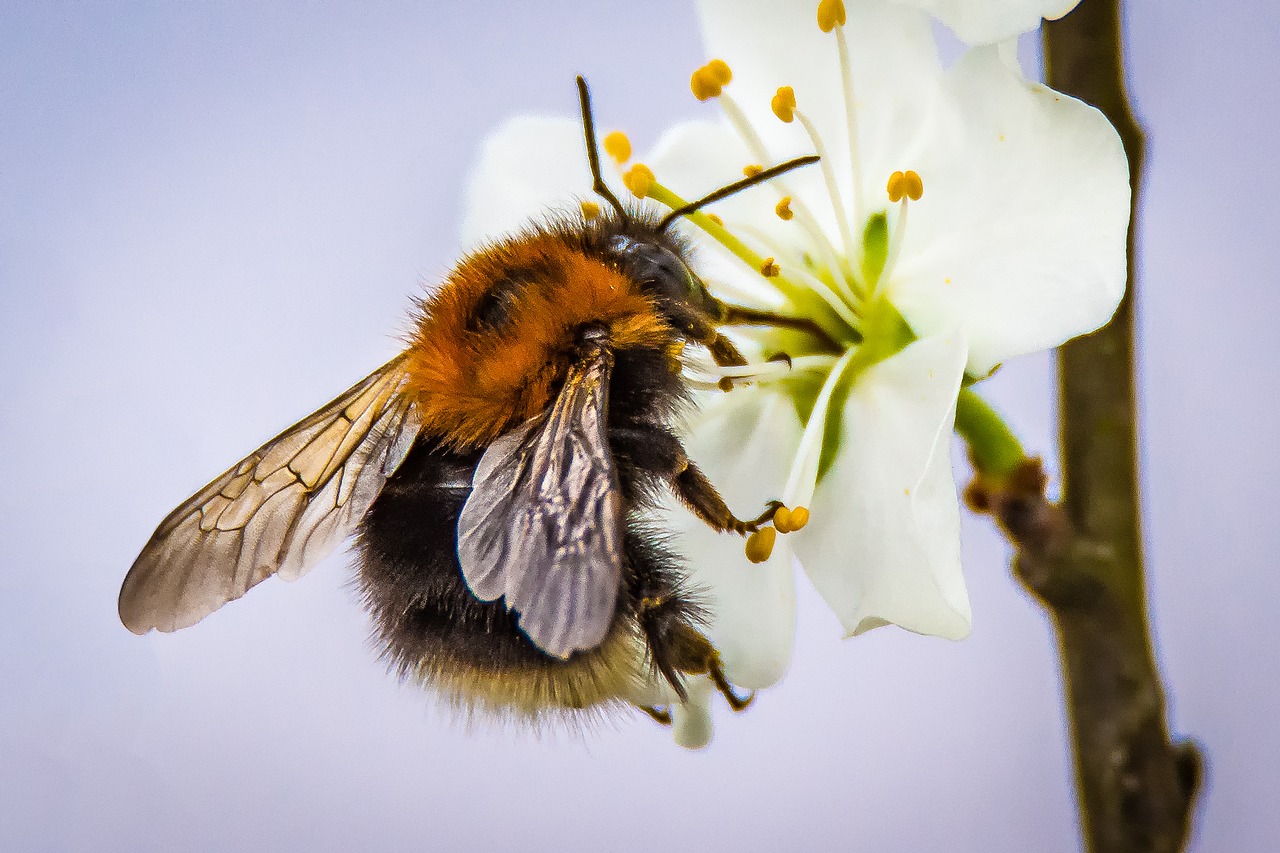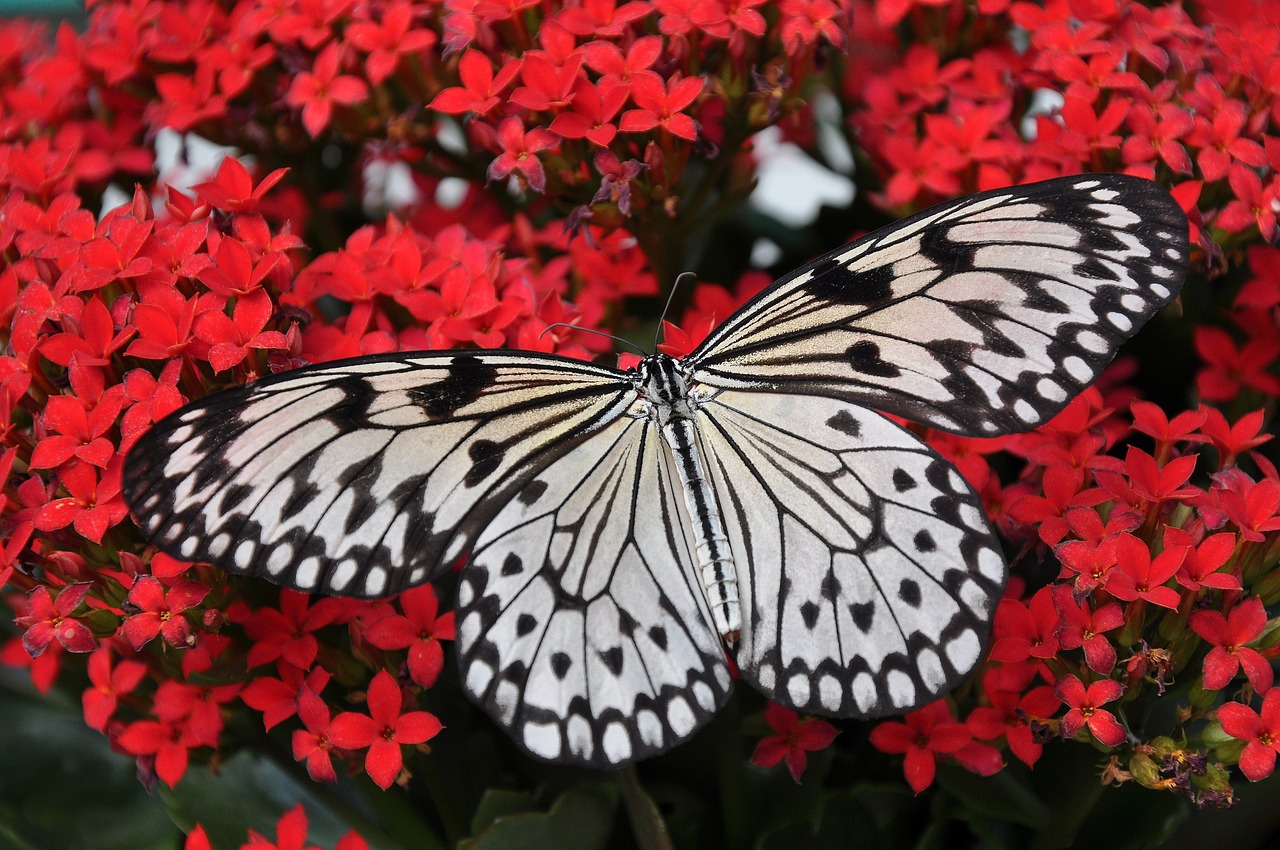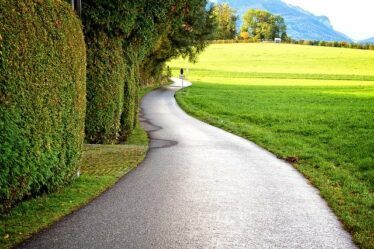
Bees and Butterflies Plants
We have become much more aware in recent years of how delicate the whole ecosystem is. Decades of pesticides and chemicals use as well as bad practices within horticulture and farming has led to a crisis in bee and pollinator numbers. We can all help boost their numbers by growing bees and butterflies plants. By choosing the right plants we can help revive, then sustain the insect population in our gardens and beyond.
Saying that, in the past I personally haven’t chosen specific bees and butterfly plants, but have always had a wealth of these lovely vital creatures in my gardens.
There are so many gorgeous, colourful and pollen rich flowers that are easy to grow to make your garden a bee and butterfly haven.
And did you know, for those of you with a musical bent that bees hum in the key of C? No wonder we find their gentle buzz a source of relaxation. Well I do anyway and I’m sure many of you will agree.
I find the gentle buzz of a busy little bee very calming and soothing, particularly on a hot summer’s day. When I have a few moments to sit and enjoy my garden I like nothing more than to listen to the bees and the birds singing. It’s very harmonious music.
The Best Bees and Butterflies Plants
Aim for a large variety of plants that have different shapes of flowers and which produce flowers over long periods. Plant a seasonally rich border that blooms from early spring to late summer and throughout the winter.
Bumblebee species prefer deep flowers such as foxglove, snapdragons, and honeysuckle. The bumblebee has different length tongues that have adapted to feed from these deeper flowers.
Plants that produce tall spires with dozens of flowers on them are very popular with bees as they have lots of nectar in one place. For them it’s like going to a favourite “all you can eat” restaurant that has everything they love on the menu…they’re going to stay on that spire for quite a while. Buzzing from one delicious bowl of nectar to the next.
Bees also like the colour blue…they are drawn to blue flowers first and foremost. So they love lavender, hardy geranium and echinops. Basically though, where there are flowers in plentiful supply all year round, there will be bees, butterflies and other important pollinators.

Double or multi-petalled blooms are difficult for bees and pollinators to access.
Lovely as these flowers are they are not ideal for our pollinator population. They don’t produce much pollen or nectar. Different pollinators are particular to a range of plants and flowers, for example, there are many species of bees that visit our gardens, some like the tree bumblebee prefer daisy type flowers, echinacea, raspberries and strawberries, more open flowers.
Open flowered types are ideal, such as:
- Cosmos
- Single dahlia
- Aster
- Rhudbekia
- Geum
- Hardy geranium
- Single clematis varieties
- Echinacea
- Eryngium
- Echinops
- Teasle
- Wallflowers
- Scabious
- Sedum
- Viburnum Bonariensis
Garden bumblebees however, have a long proboscis and therefore they can reach in to tubular flowers such as:
- Foxglove
- Penstemon
- Confrey
- Salvia
All these lovely flowers and plants are popular too with insects and gardeners. There are far too many to list here, these are just an example of flowers that bees and butterflies love and thrive on. Shop here for plants for bees
Let’s not forget the vegetable plot, “grow your own” has taken on a life of it’s own, and rightly so. Many of the vegetables we grow are a magnet for insects and bees. The good thing about vegetable flowers is that mostly they are open type blooms which give easy access to pollen and nectar. Pollination occurs naturally out in a veg garden and therefore saves us a job.
- Beans
- Peas
- Courgettes
- Pumpkins and Squash
- Soft Fruits
- Tomatoes
Plant Native Wildflowers
Native plants and native insects have inevitably evolved alongside each other and are therefore suited to each other. Their mutual association is to the plants and the insects benefit. Some of our more rare species tend to favour native wildflowers. So we do need to keep our wildflowers too. As I mentioned at the start of this article our ecosystem is delicate and its needs all the players to be healthy and abundant in order to survive.
There are other benefits to growing wildflowers too. They are easy to grow and maintain, and are usually resistant to pests because they have been around long enough to be strong against pests and disease.
I always think that daisies, the original daisies, are far stronger and robust than some of the débutante, fancy hybrids.

Best Shrubs and Trees for Bees
Some of our favourite trees and shrubs are also perfect for bees and many other pollinators as they provide masses of flowers in one place. These are really important for winter food too. Ivy for example has lots of flowers in the winter months that bees can feed on.
Choose a variety of seasonal flowering trees to provide nectar and pollen all year if possible.
Plant hedges too in lieu of fences or walls. An indigenous hedge becomes home to hundreds of insects and small animals providing food and shelter as well as nesting sites for birds. Leave part or all of the hedge as late as possible before trimming to allow pollinators to find plenty of food.
- Apple
- Wild cherry
- Blueberry
- Wild plum
- Willow
- Hazel
- Lavender
- Budlia
- Cortoneaster
- Pyracantha
- Viburnum
- Myrtle
- Ivy
- Skimmia
Make a Bug Hotel
Build insect houses in your garden to provide nesting sites for solitary bees and insects. Different bee species need different habitats.
You can make your own simple bug house from old pieces of wood, Garden canes cut up, fir cones etc or you can buy a ready-made bug house. Fix bee boxes in a south-facing spot but not in direct sunlight. The entrance must point downwards so that rain can’t get in.
Making bug houses is a great, fun project for teaching children about the importance of all our bees and insects. The delight on a child’s face when they discover butterflies, moths, beetles and bees is worth the time you spend helping to find them.
Go Wild in the Garden
Create a wild patch in your garden. Most gardeners traditionally prefer a lawn that is regularly maintained and looks neat and tidy. But if you can bear to leave a corner to grow wild, then this will help the insect population. Lawn weeds such as daisies, buttercups, dandelions and clover are perfect plants for pollinators, particularly in early spring when there is little else around for bees. As such you will find more of them coming to these wild areas.
Also, nettles are a big draw for butterflies as food, habitat and for breeding.
For further insight on the fascinating lives of bees and guidance on how to identify the many different species in your garden then read The Secret Lives of Garden Bees by Jean Vernon.
Keep Your Garden Pesticide Free
Common insecticides that contain neonicotinoids kill bees. These are still approved for home and garden use and are available from most garden centres and DIY shops. Read the labels and avoid them. For information on pesticides to avoid click here.
Use eco friendly pest treatment wherever possible. Or make your own.
Nemotodes are eco friendly and therefore do not impact on our friendly insects and pollinators.
So please, let’s grow more bees and butterfly plants, because quite simply a world without these valuable insects doesn’t bear contemplating. Shop here for bees and butterfly plants
Without them we would not survive very long. Let’s save our bees.
There would be no fresh crops of food, no fruit or vegetables. The bird and animal population would soon diminish as well.
As I look round my garden now, in early evening there are still many bees and pretty butterflies that are all vying for the choice flowers in which to find the nectar that they need. It’s so very satisfying to know that I am doing my bit for wildlife and as such for the planet.
I hope that you too find something here to inspire you to plant your garden to attract more pollinators.
Please share with family and friends if you think they will enjoy this article too.
Your thoughts and views are always appreciated so pop them in the comments box.
Happy Gardening.





Bees are very important to the ecosystem so I appreciate you bringing awareness here. Bee colonies are fascinating once you get to know how they function, with the whole colony dependent on the queen bee. Bees are only aggressive when they swarm, and if you are a beekeeper one of the best things you can have a bee suit. I am no expert in bees but I do know a little, so I’m interested to learn from your post that bees hum in the key of C. From your link I really like the ice cream collection, hot lips and Wisteria to name a few. I’ll be saving your link to refer back to and to share with some other garden enthusiasts, thank you!
Hello,
Thankyou so much for your kind comments.
Bees are so interesting, I agree with you there.
My sister keeps bees and so does a client of mine. The honey is really delicious and completely organic.
Thank you for saving and sharing
Best Wishes
Louise
Hi, Louise.
Your article on bees and butterfly plants was too motivating.
We have around thirty plants in our balcony garden but none of them is flower plant. All the plants are with lush green leaves. I will try Lavender pots as per your suggestion as they are most loved by butterfly.
Please suggest which variety is suitable for indoor flower plants.
Warm Regards,
Gaurav Gaur
Hello,
Lavender is a European plant, both English and French lavender can be grown indoors . They need a bright sunny spot. Keep turning the pot so that you keep the growth compact and even.
Water well but allow to almost dry out between watering.
I hope you are motivated to have some flowering plants on your balcony to attract more bees and butterflies.
Thank you for your interest.
Louise
Hello,
This is a really lovely article. We do need to do all we can to make sure our bees and butterflies survive.
I will be planting lots more flowers that will attract them as I love to see them in my garden.
Alison
Hello again Alison,
Thankyou for pooping back and reading my articles. I’m thrilled that you are planting flowers for bees.
Louise
Lovely article. Apiculture is becoming increasingly popular with every passing day, but most people are not aware of the best practices of beekeeping. Your recommendations regarding plants where the bees will find easy to pollinate are also extremely helpful. And thank you for the warning regarding pesticides. Most people are unaware as to the real danger which these chemicals bring in and this article will help them understand the need to stay away from them.
Hello Sirshendu, thank you for your interest in my article about bees.
I appreciate your comments.
I am fully planning to educate and bring awareness to more people about how we can improve our gardens to benefit these important creatures.
Louise
Great article that highlights the importance of looking after our pollinators and making sure that we have plants, shrubs and trees that have pollen and nectar. also to grow plants all seasons so that bees and pollinators can find food all year.
Alan
Hi,
Yes it is very important to grow a good, diverse selection of seasonal plants and flowers to provide nectar all year round.
Louise
I enjoyed reading this and it has given me ideas for my new garden. I will be rethinking my planting ideas to include lots more flowers for bees and wildlife.
Thank you
Hello Alan,
Good to know that I have inspired some different planting ideas for your garden.
Hello,
Great that you are inspired to grow different plants in your new garden.
Thank you for your interest.
Louise
Hello Louise,
This is such a good post about bees and butterflies and pollinators. It is so important to provide more nectar filled plants for them. We have done so much damage to the planet and wildlife. We gardeners have to try to do all we can to redress the balance.
Well Done
C
Thank you Gill,
Great to have your comments and views.
Yes we do have to put things right the problems we have caused.
We do our best.
Louise
Hi C,
I’m happy that you enjoyed this and have the same views, we really do need to do as much as we can.
Louise
Great post, as you know I only have flowers and plants that are hugely beneficial to bees and all our pollinators. Great that you have told us the plants that we need that are nectar rich in order to re establish a healthy bee population ?
Hi Gill,
Thank you for your comments.
I know your garden is full of bee friendly plants ??
Hi Louise, thanks for this post.I found this to be very interesting and I love to hear bees buzzing around and it always makes me think of summer when you see the bees and the butterflies flying around. It is so nice to see all the lovely colours on the butterflies. I always say that insects were put on this planet just the same as you and I, therefore I never think it is right to see people trying to kill bees or any other insects. They have the right to a place on earth.
Hello Cheryl,
I completely agree with you, the insects have as much right to be here as any other creature. They all play an important part in the eco system of our planet.
Thankyou for your comments, most appreciated.
Louise